For outsiders and outliers, Danny Fuentes’ gallery is a place to call home
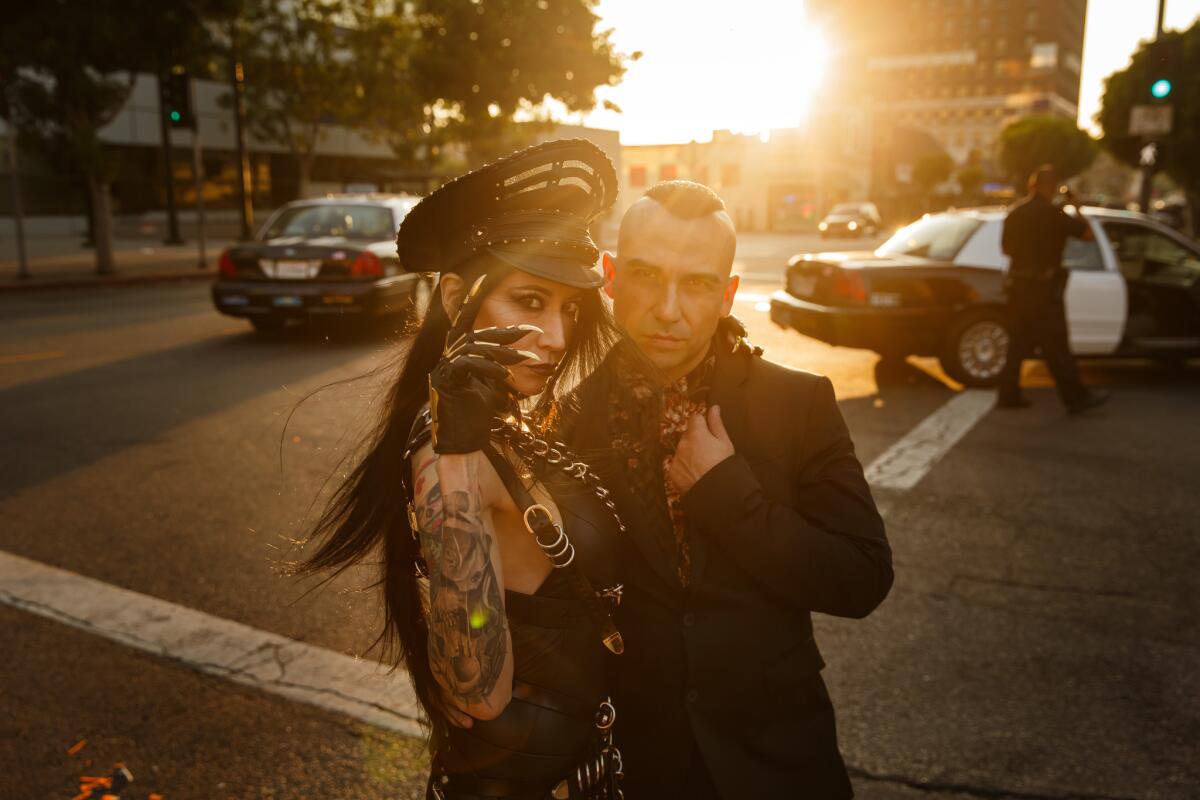
- Share via
Danny Fuentes stands in the middle of his downtown art gallery, Lethal Amounts, giving one last look to an exhibit set to open in 24 hours. He’s dressed in his usual all-black; among the many tattoos dotting his body, the most striking is a lithesome spider on one side of his shaved head.
The exhibit, by an L.A.-based artist named Lizz Lopez, is called “Muerte.” Lopez’s pieces, executed mostly in graphite, are stunningly intricate; most depict skeletons in whimsical poses, often swathed in Victorian lace. “There’s a lot of Santa Muerte stuff going on in here,” Fuentes says of Lopez’s work, referencing the Mexican folk saint of death.
“I obviously like stuff that can be a little bit more macabre, a little bit darker.” He pauses in front of a skeleton holding marionette strings connected to two smaller skeletons in baby bonnets. "But I do like it when things are dark with a humorous twist.”
There really is no other gallery in L.A. that does what he does
— Lizz Lopez
For five years, Lethal Amounts has provided a home to what Fuentes calls “stuff that’s weird and curious and doesn’t necessarily have to fall into a category of fine art.” In that time, he’s become best known for courting controversy — he’s presented shows on satanists and serial killers — and for presenting the art and personal archives of such rock cult heroes as Ministry frontman Al Jourgensen and punk singer/poet Lydia Lunch. But he has also championed people like Lopez, unconventional artists — many of them women, Latinx or LGBTQ — whose work is too provocative for more mainstream galleries.
“There really is no other gallery in L.A. that does what he does,” says Lopez, for whom this is her first solo show.
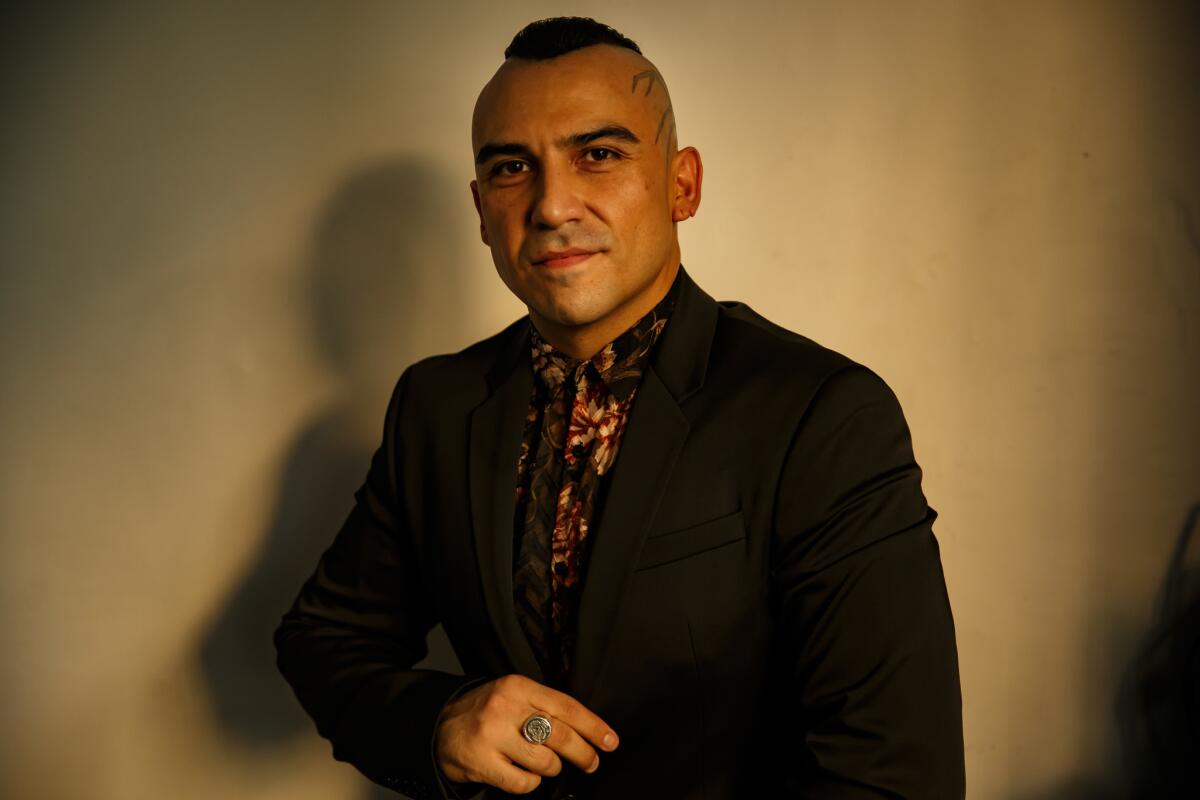
Fuentes, 35, became a gallerist more or less by accident. When he first opened Lethal Amounts in February 2013, it was a showroom for his T-shirt line. His first exhibit, a celebration of L.A. billboard maven Angelyne, was intended mainly to drum up business for his off-the-beaten-path location in Westlake, between the 110 Freeway and MacArthur Park. To this day, he admits, “I really don’t know what I’m doing. I didn’t go to school for this. I didn’t get mentored by some museum gallerist or anything.”
His office in the back of the gallery reflects his eclectic and often confrontational tastes. Photos of punk icons like Patti Smith and the New York Dolls line one wall. In the corner, a red “Make Again Great Again” cap tops a hat rack draped in bandoleers and bondage belts. “I’m just going after what I like, really,” he says matter-of-factly. “I think that’s what gallerists are supposed to do.”
Fuentes was raised in pre-gentrification Glassell Park, a working-class Latino neighborhood under the threat of gang violence. At a young age, he discovered punk rock through an older sister. “She was like, ‘OK, I’m gonna take you by the hand. Because you could either wind up a cholo and dead, or I could guide you a little bit.’”
The bands he was drawn to were outliers like Christian Death, whose late frontman Rozz Williams wore wedding dresses onstage and whose sound, sometimes called “deathrock,” combined elements of punk, goth and hard rock. “I was a young gay kid in the hardcore ’90s punk scene, [which] was certainly violent and hyper-masculine,” he says. “And they were so weird and adventurous and heavy.” He’s producing a documentary about Williams called “Spiritual Cramp,” which is still being shot.
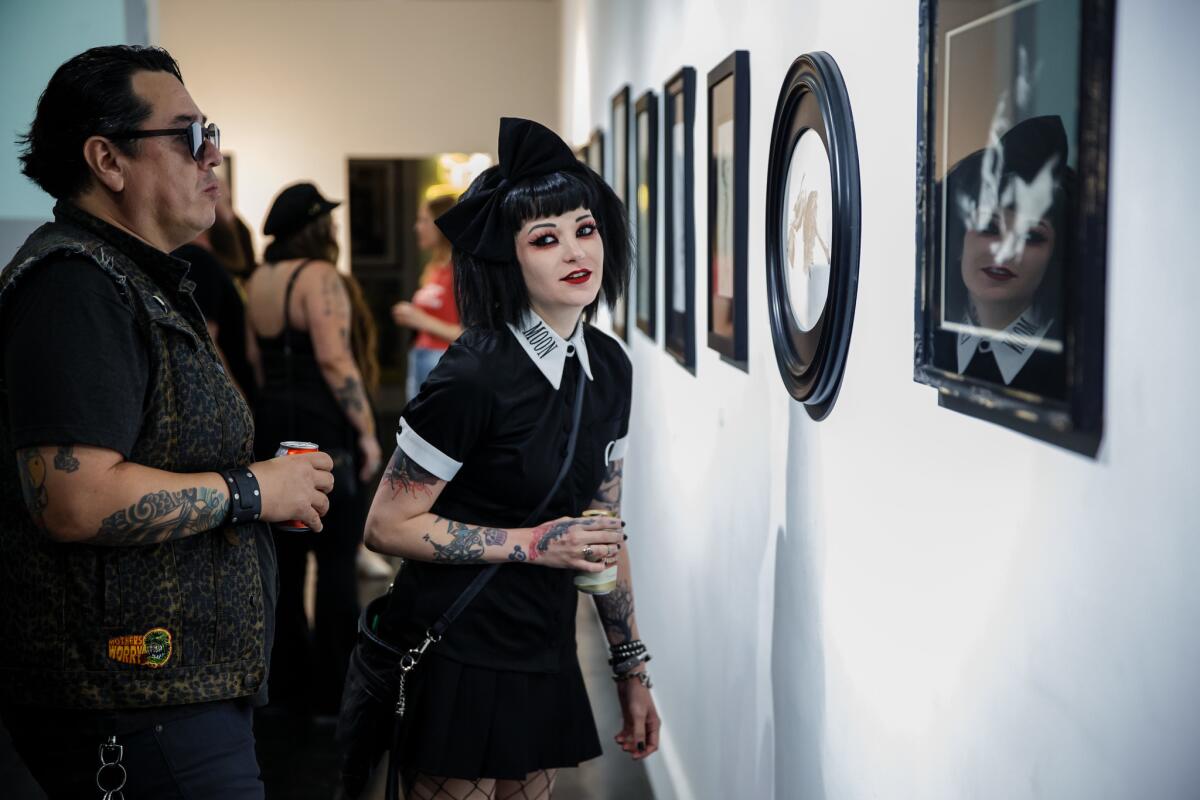
Many of the exhibits at Lethal Amounts feature LGBTQ artists and themes, always presented with the transgressive edge Fuentes adopted from his childhood heroes. Among the most memorable was a 2016 career retrospective from Canadian photographer and filmmaker Bruce LaBruce, whose work borrows from gay pornography and John Waters’ mix of camp and shock value. The show was so successful that LaBruce took a version of it on to galleries in Madrid and London.
LaBruce praises Fuentes for being “old-school gay and queer punk,” a throwback, he says, to a time when LGBT culture was marginalized and often pushed to the fringes of society. Fuentes, LaBruce notes, “has that cred” in both the LGBTQ and punk communities that enables his exhibits to reach a unique cross-section of L.A.’s edge-dwelling art scenes.
Bud Thomas, library supervisor for the ONE National Gay and Lesbian Archives at USC, echoes LaBruce’s assessment of Fuentes. “It reminded me of the East Village in the 1980s,” he says of the first time he attended a Lethal Amounts opening, “and I lived in the East Village in the 1980s.”
I was a young gay kid in the hardcore '90s punk scene, [which] was certainly violent and hyper-masculine.
— Danny Fuentes
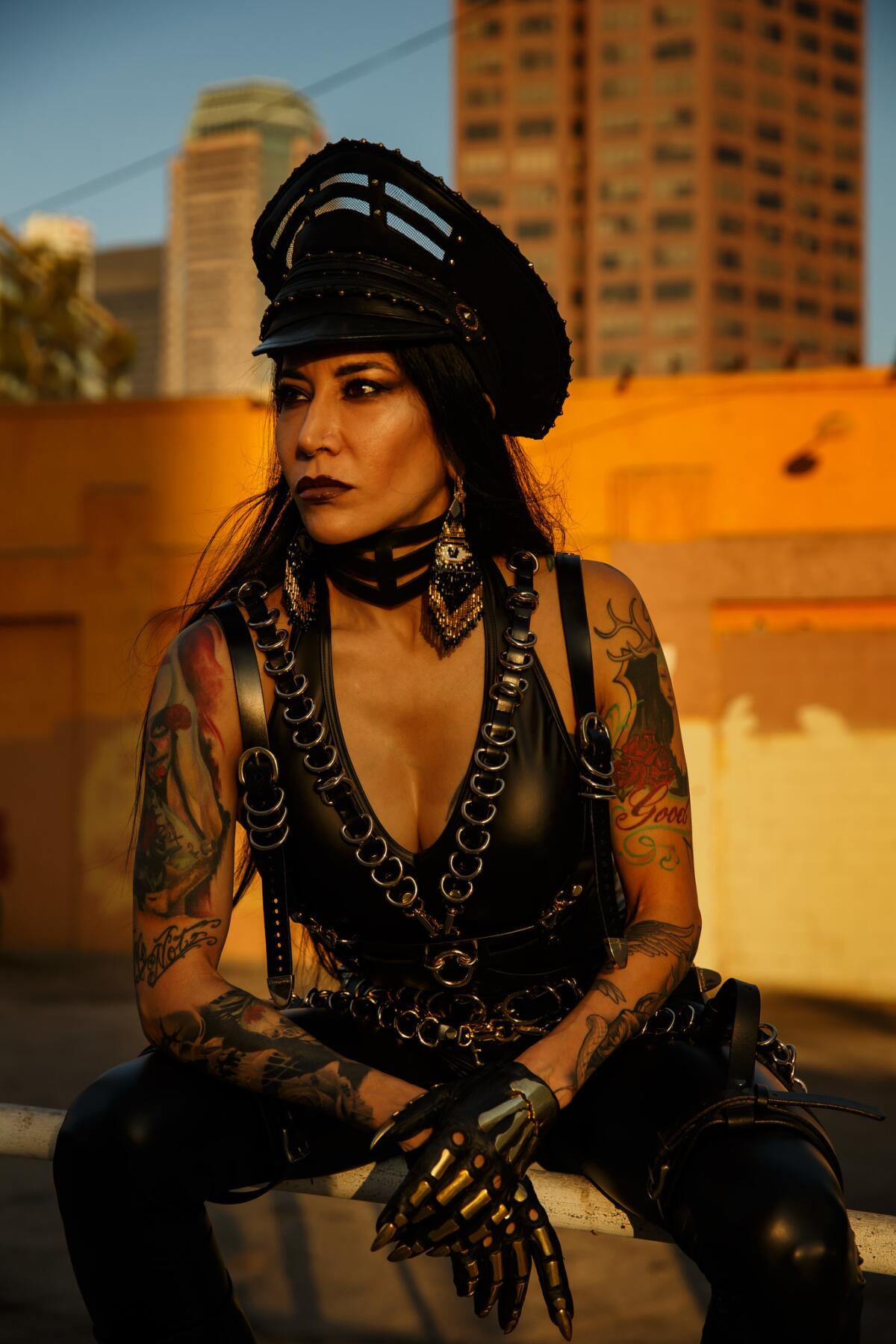
Though he’s far too young to remember it firsthand, Fuentes’ favorite period in art and music is an even earlier era in New York’s demimonde: the 1970s, when punk-rock was born at CBGB and Andy Warhol’s Factory was still in full swing. After “Muerte,” his next exhibit will feature photos and memorabilia from the personal collection of Danny Fields, who managed the Ramones and helped sign the Stooges and the MC5. Fuentes sees it as a spiritual sequel to the exhibit he remains most proud of: a 2014 retrospective of New York rock photographer and Factory associate Leee Black Childers, who passed away just weeks after the show’s opening. “He kind of put me on the map,” Fuentes says.
In documenting the work of Childers and Fields, both out gay men — as well as Williams, who never declared his orientation but “had a boyfriend [and] wore dresses,” as Fuentes notes — the owner of Lethal Amounts is challenging the conventional narrative of punk rock, which has tended to erase the influence gay culture had on its development. Still, he’s reluctant to politicize their work, or his exhibits that showcase it. For Fuentes, anyone who falls into an “outsider category” — queer, minority, goth, punk, or just off-the-wall — is someone whose work he wants his gallery to celebrate.
“To me it’s more important to just be yourself,” he says. “I don’t necessarily have to wave a rainbow flag to show that I’m proud of who I am.”
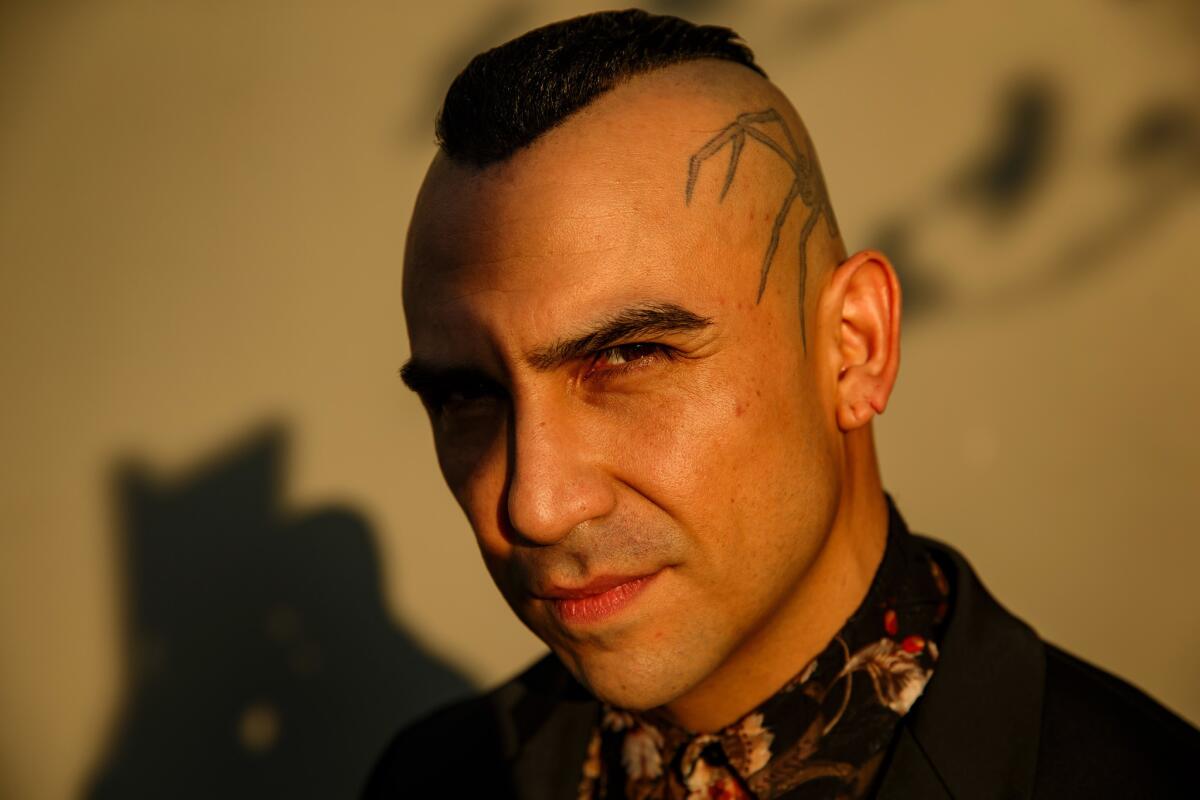
Sign up for The Wild
We’ll help you find the best places to hike, bike and run, as well as the perfect silent spots for meditation and yoga.
You may occasionally receive promotional content from the Los Angeles Times.



